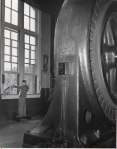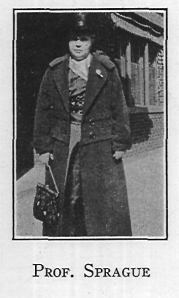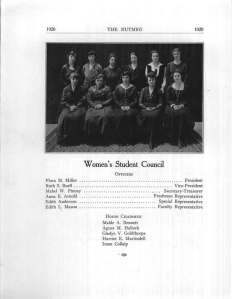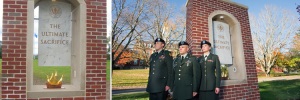Here’s the deal about the man with the fish.
This gentleman is identified on the photograph as Walter Atkin who presumably worked at the Tariffville Dam hydroelectric station on the Farmington River in Simsbury, Connecticut. The date of the photograph is 1948. This photograph is from the Hartford Electric Light Company Records, a collection of business records of this company that we have here at the Dodd Research Center. 
The collection has these photos of Mr. Atkin fishing directly from a window in the power station, something I personally think is hilarious. I wonder if his employers were aware that he was spending his time in this manner while on the job. Hmmm…I wonder if my supervisors would approve my fishing in Mirror Lake during work time.
Hey, it worked for Walter…
Laura Smith, Curator for Business, Railroad and Labor Collections














